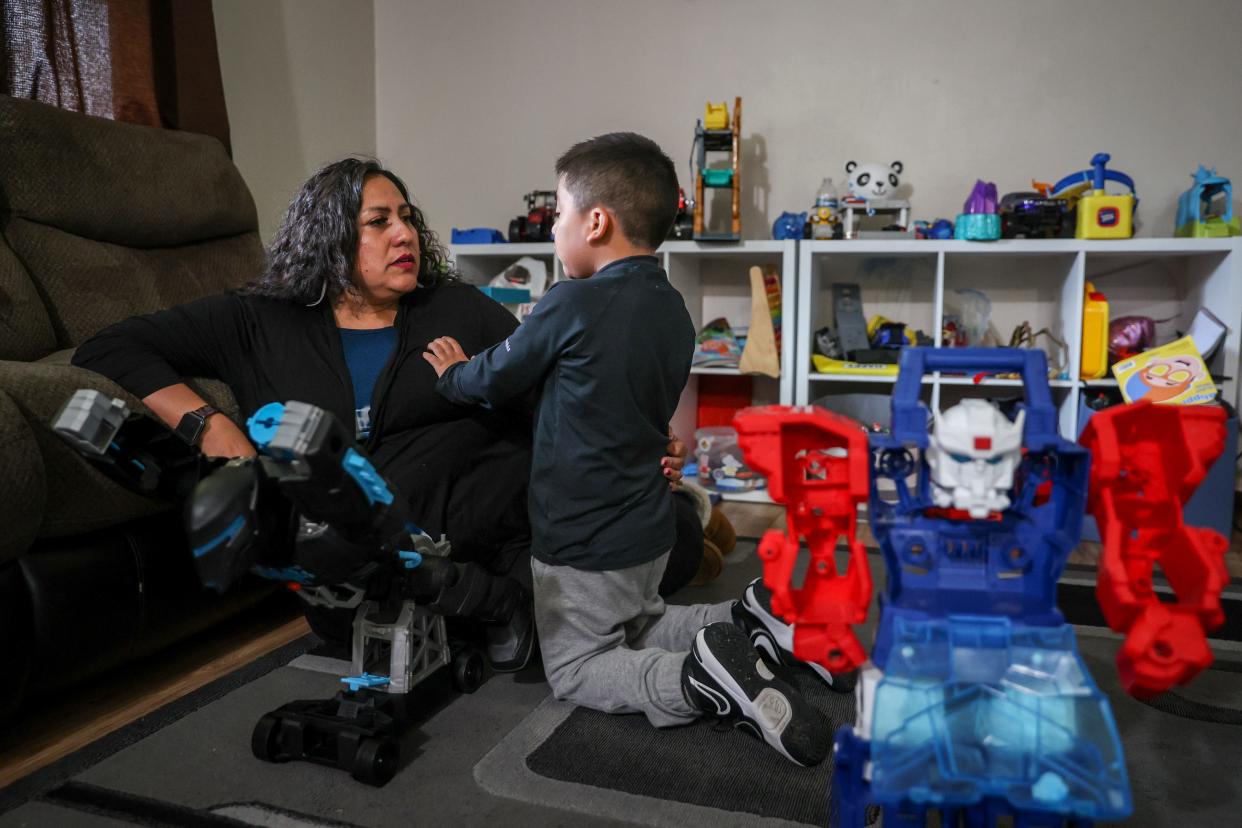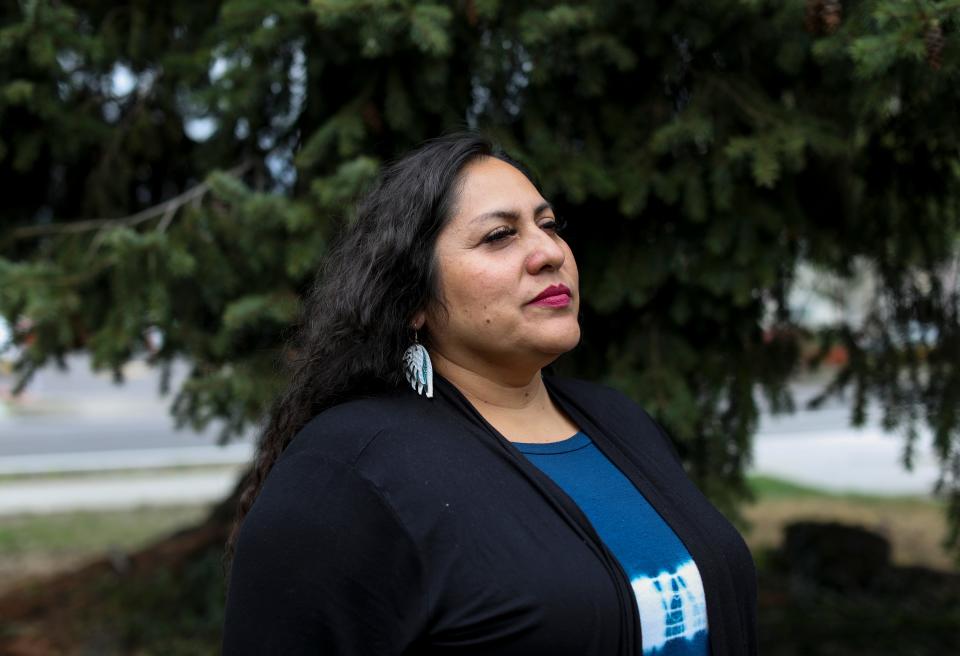Oregon's subsidized day care program is about to run out of spots

When her first son was born 26 years ago, Luz Quevedo had to rely on coworkers and friends to care for him while she worked.
She gets emotional remembering one day lifting her son’s sweater when he was about 7 and discovering bruises. A child at the home of a family friend had been bullying him while she was at work, she said.
“I had no resources, nothing, for help,” Quevedo, now 48, said.
Twenty years later, when her second son was born, the child care worries returned.
A coworker recommended she apply to the Employment Related Day Care (ERDC) program. It was a resource she didn’t realize existed in the state.
Milan, now 4, is enjoying his first time in preschool thanks to the program.
But help for more families like Quevedo's is coming to a halt soon. Limited in funds and unable to meet demand, Oregon’s largest program to help parents offset the cost of child care is closing enrollment.
Families applying to the Employment Related Day Care program after 11:59 p.m. Nov. 3 will be forced to join a waitlist, where they will stay for at least 18 months. And the Department of Early Learning and Care warned it could be longer.
Drastic changes to program

The agency is Oregon’s newest. It was established through House Bill 3073 in 2021 and is meant to consolidate the state’s early learning and child care system. The agency took over several programs including ERDC in July.
The ERDC program is funded in part by state and federal dollars.
ERDC makes direct payments to a family’s chosen child care provider. Families earning up to 200% of the federal poverty level are eligible and pay a small copay based on income to providers that accept ERDC. That means a family of two earning $36,620 or a family of four earning $55,500 qualify for the program.
It is a program that historically hasn’t worked for families or providers and has been underutilized, Department of Early Learning and Care director Alyssa Chatterjee acknowledged.
HB 3073 made significant changes in an effort to make the program more accessible.
It reduced copays to below 7% of household incomes, made it so providers are paid based on enrollment and not attendance, expanded eligibility to parents who are full-time students, allowed families to apply for the program while on leave, and began to cover child care during sleep hours for households with two caretakers.
In July, ERDC implemented additional changes including protected 12-month eligibility and the ability for families receiving Temporary Assistance for Needy Families to receive child care assistance at the same time.
The 12-month eligibility is significant for several reasons, not least of which is the shortage of child care programs around the state.
A report from Oregon State University in June confirmed that all Oregon counties except Gilliam County are considered "child care deserts" for infants and toddlers, meaning an area where at least three children exist for every child care slot available.
In the past, families would be dropped if they did not find a provider within three months. Some waiting lists for centers lasted longer than that.
More changes are supposed to be implemented next spring, including expanding eligibility to children regardless of their citizenship status.
The changes did what the Legislature hoped: growing families enrolled in ERDC by 52%. Enrollment grew by 22% from June to August alone.
ERDC currently supports about 14,000 families across the state in paying for child care.
"The trends were so unprecedented," Chatterjee said.
In August, the department began preparing for the implementation of a waitlist.
Gov. Tina Kotek on Thursday said ERDC will need at least $50 million more this biennium to meet the demand for child care assistance in Oregon.
It is a significant funding gap that is likely to continue to grow. And it is a funding gap advocates said legislators were warned about.
'100% preventable'
In June, advocates placed 1,000 colorful pinwheels on the Capitol Mall urging legislators to invest at least $100 million more into the Department of Early Learning and Care.
The Legislature did approve an additional $23 million at the end of the session, $8 million for caseload increases and $15 million to cover any changes to compensation for providers, but it wasn't enough to meet the demand.
"We were really, you know, just there waving our hands in the air trying as hard as we could to really just try and warn lawmakers that this was going to happen," said Courtney Veronneau, policy director at Family Forward Oregon, an advocacy group.
When Family Forward Oregon was notified by the agency the waitlist would be implemented, they weren't surprised, she said.
"It's still incredibly disappointing because this was 100% preventable," Veronneau added.
Family Forward Oregon and other advocates are calling on Kotek and lawmakers to come up with new funding in time to avoid implementing the waitlist.
Candice Vickers, executive director of Family Forward Oregon, said lawmakers must make it clear that they are prioritizing child care and recognize that child care is a part of the vital infrastructure of the state "just like roads and bridges."
The disruption will be palpable at every part of the state, not just among caregivers and families, Vickers said, but also employers whose employees are going to be struggling without a safe place to send their children while they work.
How to enroll
Chatterjee said it is important to hold on to the fact that ERDC is a program that, after significant legislative changes, is now working for Oregon families.
"It's not that families didn't need child care. It's that the Employment Related Daycare program didn't work for them," she said.
She is encouraging families who believe they are eligible for ERDC to apply before 11:59 p.m. on Nov. 3 and avoid the waitlist. As long as applications are started, they'll be reviewed.
With the new 12-month eligibility protection, it means the only reason a family would be dropped from the program is if they voluntarily leave, if their children age out, or if the families' income rises above the limit.
To apply:
Visit Benefits.Oregon.gov
Visit a local Oregon Department of Human Services office
Call 1-800-699-9075
There are exemptions that would allow families with specific needs to still enroll in ERDC after the deadline.
Families recently or currently receiving Temporary Assistance for Needy Families (TANF) or Temporary Assistance for Domestic Violence Survivors (TA-DVS).
Families referred by the Child Welfare division of the Oregon Department of Human Services (ODHS) or reapplying for ERDC within two months of benefits ending.
Families currently receiving ERDC will continue to receive benefits after Nov. 3.
Dianne Lugo covers the Oregon Legislature and equity issues. Reach her at dlugo@statesmanjournal.com or on Twitter @DianneLugo
This article originally appeared on Salem Statesman Journal: Oregon's Employment Related Day Care program implements waiting list

